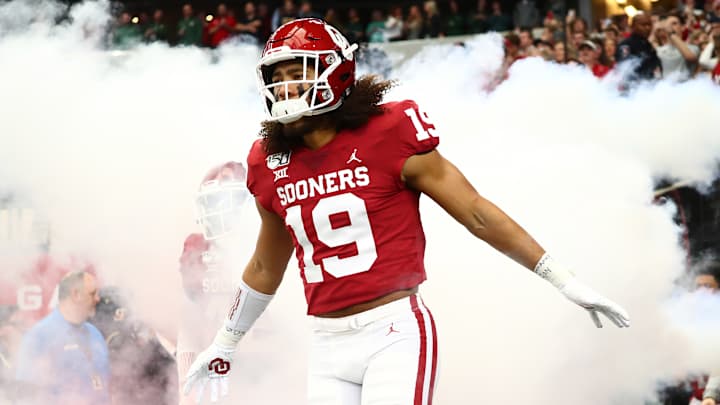Big Week Ahead for Big 12, NCAA


While college sports consumers wring their hands and gnash their teeth over the depth and breadth of the 2020 football season, there may be far broader machinations standing in the way of an Aug. 29 kickoff.
The NCAA now faces a potentially monumental split from its money-making schools in the autonomy conferences — i.e., the Power 5 — at the same time student-athletes in both the SEC and the Pac-12 have made it known that they are indeed not chattel to bought and worked and sold for the price of a scholarship.
As new cracks open in the NCAA’s long-time barrier — a dam that has no longer seems capable of holding back the rising tide of player compensation and other benefits — the association’s Board of Governors meet Tuesday to begin examining things long-term.
Meanwhile, closer to home, the Big 12 Conference’s presidents and chancellors are scheduled to meet Monday to receive recommendations from league athletic directors about possible schedule iterations for the upcoming season.
CBS Sports’ Dennis Dodd reported Friday that Big 12 ADs were split about which recommendation to make: forging ahead with a 12-game schedule (and, presumably, just taking cancellations as they come — play as many games as possible, in other words) — or taking a more measured approach with a 10-game schedule (which builds in extra open dates to manage rosters affected by positive COVID-19 test results and also allows for one non-conference game).
Dodd’s report cites several unnamed “league sources.”
One source told Dodd that it looked like the league was “headed down a pathway of nine plus one.” Oklahoma athletic director Joe Castiglione said Friday during a radio interview with Toby Rowland on SportsTalk 1400 The Ref in Norman, “What we might consider is the nine conference games plus one additional games.”
Public opinion and overall optics likely will be factored into the Big 12 CEOs’ decision.
Playing 12 games, especially during a deadly pandemic, looks like a projection of unacceptable financial losses and an acceptance of the health risk to student-athletes and staff, while playing just 10 games (or nine) would seem more in line with an attempt to implement new safety protocols along with an acknowledgment that the economic shortfall can be mitigated.
“We have to be very mindful that disruptions could happen at any point — once we decide and once we get into the season,” Castiglione said. “That speaks to the consistency of being flexible.”
Ultimately, the Big 12’s hand may be forced by what other Power 5 leagues have already decided. The Pac-12 and SEC will play 10 games, while the ACC has settled on an 11-game model. The Big Ten hasn’t announced its decision yet.
After deciding how many games comes the question of the Big 12’s start date. Will it be the apparent favored date — Aug. 29, which is when Oklahoma and other Big 12 schools have declared as the opener? Or will it be later into September, which is what the SEC, ACC and others have decided?
“We do believe the longer you wait, the more information you have,” Big 12 commissioner Bob Bowlsby said in a recent interview with ESPN Radio. “What was gold a month ago is garbage today, and I’d guess that the same thing would be true a month from now. This is a voyage of discovery.”
Pushing the openers into September allows more time for teams to be together and manage possible COVID-19 spikes when the general student population returns to campus.
On the other hand, opening the season in August allows teams more flexibility to postpone games if a team roster — or its opponent’s — are weakened by an outbreak.
“Everybody’s gonna be doing this for the first time,” Castiglione said. “We thought the benefit of time between games is gonna be helpful.”
Something else in play: the Big 12 remains the only Power 5 league that hasn’t won a College Football Playoff game. The league getting another seat at the playoff table in 2020 is more important than ever.
However, playing a nine-game conference schedule — or nine league games plus a Group of 5 or FCS opponent as currently scheduled — won’t help the Big 12 champion get into the bracket over an SEC contender that has played 10 conference opponents, or an ACC team that has played 10 conference opponents and a non-conference tune-up.
If the Big 12 is going to reduce its schedule but keep a non-conference opponent lined up for 2020, then keeping quality opponents to fortify the resume could be a vital step to landing a CFP berth.
Radical ideas like adding a temporary Big 12 member — BYU, for instance, which has no conference affiliation — could solve that dilemma.
“I think our choices are going to be the number of games and the start date,” Castiglione said. “Everything’s still on the table.”
Then again, it could come to pass that none of this matters — to some schools, to most schools — or to everyone.
The most significant underlying factor to having a 2020 college football season could rest in the hands of state and local health officials, governors and even mayors.
If Joe Castiglione and Big 12 ADs recommend the 9 + 1 model, and Joe Harroz and Big 12 presidents approve it, and Kevin Stitt and the Oklahoma Department of Health decide that college sports in the Sooner State are going to have to wait until 2021 — and what do those officials in Texas, Kansas, Iowa and West Virginia decide? — then this entire exercise has been fruitless.
To get the latest OU posts as they happen, join the SI Sooners Community by clicking “Follow” at the top right corner of the page (mobile users can click the notifications bell icon), and follow SI Sooners on Twitter @All_Sooners.
